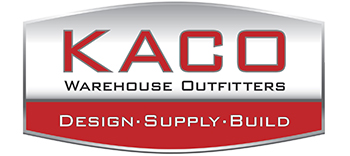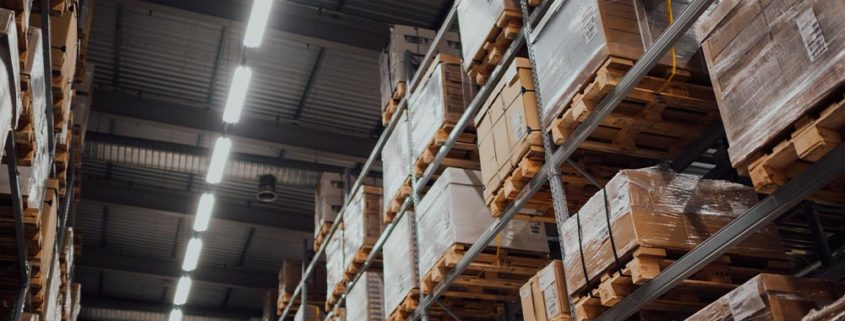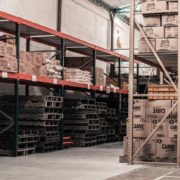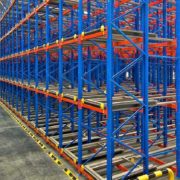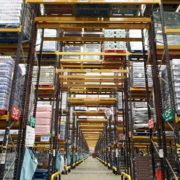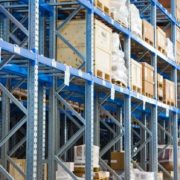Key Factors in Warehouse Design
When it comes to warehouse design, there are a few key factors to think about. You’ve got to think about outbound logistics, what happens in the warehouse and outbound logistics. Whether your company has one warehouse or multiple warehouses, the choice of location will influence costs, efficiency and service. If fast service is a part of your service, you’ll want to have the warehouse located close facilities of your carriers or close to where your customers are located. In addition to lead time and supply chain velocity, you’ll also need to think about the processes in the warehouse, storage, receiving and dispatch volumes. The goal is to focus on network optimization. How quick are your inventory returns? What’s the strategy for the best customer service. Also, there are physical requirements. Is your process manual or automated? And when it comes to inbound logistics, you’ve got to consider these questions. What are the lead times for incoming deliveries? Where are your supplier located? How reliable are your suppliers?
All About the FAST Concept
The FAST concept is the acronym for flow, accessibility, space and throughout. You can apply this concept to the layout of your warehouse design. The objective of FAST is to enable smooth workflows with an emphasis on warehouse location and service. It’s a tried and proven concept that you can use when designing a warehouse.
Once you know how many warehouses and their locations, then think about structural design and capacity. In order to focus on structural design and capacity, as yourself these questions.
- What takes place in the warehouse? What are the daily operations? What areas do you need for intake, storage, packing, picking and dispatch? Where will you locate any value-added services?
- What are the characteristics of the products? What types of products are stored? Are these products fragile or hazardous? Will you be using cartons or full pallets for storage? Are there rules and regulations for the storage of the products? Is any type of control needed in the environment, such as temperature control for frozen goods?
- Does the season affect the storage? If volumes vary depending on the season, you’ll have to allow the proper capacity for this. Does your warehouse handle returns from customers? If it does, you’ll likely need extra space for this processing and storage.
Applying the FAST Concept to Warehouse Layout Design
Let’s begin with F for flow. Here, the concern is the uninterrupted flow of movement, including people, products and traffic. The goal here is to ensure there are no cross-flow clashes in the operations of the warehouse. There should be a logical sequence of operations inside the warehouse. A smooth flow of operations includes no disruption and a limited amount of movement. Time is money. With uninterrupted flow, you’ll be maximizing revenue.
Accessibility not only includes being able to get to the product, but to the packaging unit. Can the product be assessed via a truckload or a pallet load? How do the products in your facility get from one place to another? You’ll need to think about whether or not the strict policy of first-in-first-out (FIFO) applies to your product, since you’ve got to be certain that you’re in compliance. In the case of bottled water, you may have to access inventory in a store stock room. For example, with pharmaceuticals, access may be needed to fast-moving stock area, and that takes space.
Let’s move on to space. Warehouse space should always be maximized for stock processing reasons and for operational storage. All space should be planned and utilized wisely. Keep in mind that you’ll need space for offices and working areas. Be sure to make optimal use of the cubic capacity of the space and not just the floor area. Build flexibility into the operation by using the best storage media that can evolve. This way, when your operations grow, you’re in place strategies can grow with it.
Throughout entails the nature of the product and its velocity. Characteristics like size, dimensions and shape have to be taken into consideration. The velocity of the product will depend on the volume of what’s moving in the warehouse. Use data media to assist in the layout of the design, and get the facts. The better the data; the less the risk.
Without a doubt, there’s a lot to think about in warehouse design. It’s not an easy or simple task. Planning and designing is an important undertaking that requires a lot of thought. The main point is to understand that flow, accessibility, space and throughout must be in place for maximum efficiency. If you’re not certain on how to do this, consider consulting a specialist with plenty of experience in warehouse design. A specialist will be able to ensure that your warehouse design and operations work for you.
